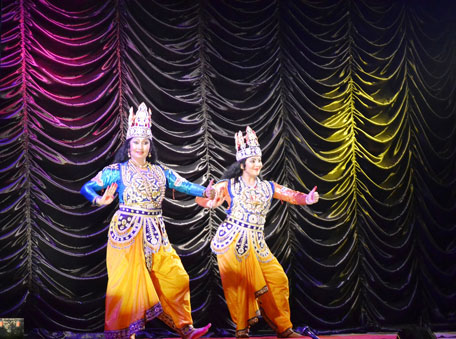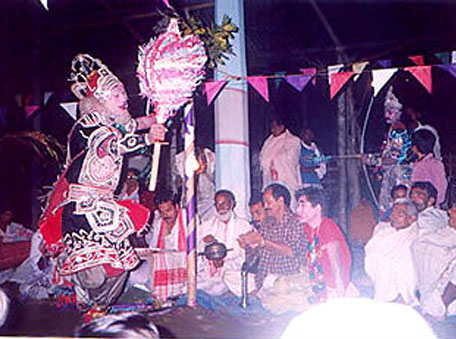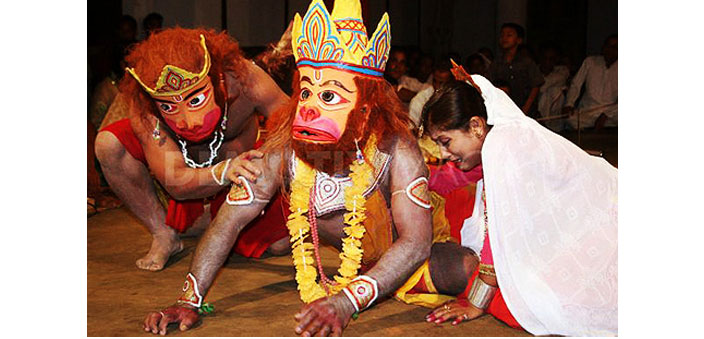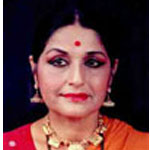The state of Assam has played a very important role in the development of the dramatic tradition in the Northeast. The tradition that has emerged in this area from the 15th-17th centuries AD is the result of the all-pervading Vaishnava bhakti movement that swept not only this area but the entire country.
The message of Shankardeva
The history of the theatre in Assam can be termed as the history of Vaishnava theatre revolving around the institution of ‘Sattra’ (monasteries). This history is irrevocably amalgamated with the towering personality of Shankardeva who was responsible for transforming Assamese society in many ways. He became a monk and travelled extensively all over the country and imbibed the teachings and cultures of other regions, and finally returned to Assam to give a new message of Vaishnavism. This was the message that carried a singular protest against the superstitious and dogma-riddled sects engaged in Shakti worship. He was indeed a social reformer who pioneered cultural renaissance in Assam.
The Sattra was the vehicle of his movement, which became the venue and centre of religious, social and artistic activities. One of his most noteworthy artistic contributions is the dance-drama known as Ankiya-naat, its actual performance being called Bhaona, taking the tradition of classical Sanskrit theatre as his inspiration. His reasoning is very easy to understand – there can be and should be a dramatic presentation that would please the common people but at the same time, could become a skillful medium for the propagation of his new Vaishnava faith based on Bhakti.

The full-fledged Sattra
A full-fledged Sattra comprises a naamaghara, a manikoota, and haatis. The naamaghara is the congregational prayer hall and the manikoota is the sanctum or the simhaasana (throne) of the Sattra at the extreme end of the naamaghara. The haatis are the living quarters for the monks.
The naamaghara provides the venue for the theatrical performance; it is often called the Bhaona ghara. The Sattra-adhikaaris belong to both the Brahmin and non-Brahmin castes. The naamaghara is a rectangular structure with collapsible walls of bamboo. The floor-space is clearly demarcated for the orchestra, the actors, and the audience. The lighting is beautifully provided by sticking earthen lamps to the trunks of Kadali trees. Dramatic effects are provided by mobile torches.
There are two groups of musicians – one sitting on the right and the other on the left or one behind the other. They are called gaaya and baayana respectively. The groups enter the stage to the accompaniment of fire-works. The musicians enter behind a white screen called Arkapor, and take their respective positions to indicate the performance would now begin. Next come the vaahini and the gurughata ghosha dhemaali which set the artistic mood. The sutradhar enters (usually accompanied with dance); his entry is very rightly called paatra-pravesha.

The dance technique is very well- defined as in the case of classical dances with a judicious blend of nritta (non-representational dancing) and nritya (dancing, wherein words and sentiments are conveyed through physical movements).
After Shankardeva came another illustrious savant named Madhavadeva. Shankardeva’s dramas were cast in multi-media and multi-dialect approach, whereas the plays of Madhavadeva are operatic in character and are more lyrical than dramatic. According to respected scholars, the gaayana (singing) and baayana (orchestra) add to the glamour of the presentation where the discerning members in the audience enjoy both, the spoken words as well as the dancing. And above all, the dramas are singular celebration of Krishna’s name.
The vital role of music
These dramas are popularly called Ankiya-naat. The Bhaona performances can be called naatakas or more appropriately (in the contemporary parlance) dance-dramas, in which not only the spoken words but also music and dance have very important roles to play.
Assamese music has a special flavour and incorporates certain relevant features of Hindustani musical system. At the same time, there exists a distinct Assamese tradition which blends beautifully to result in a very distinct musical effect – the bargeetas. The bargeetas are all set to specified raagas and taalas. In the musical instruments there is the drum (khol) and, most importantly, the little cymbals (manjeera). There is also the mridanga (drum) made up of clay. Other percussion instruments are the dundubhi, bheri, gomukha, pataaha etc. There is also the use of stringed instruments like a simplified veena which resembles ektara.
The dance technique has an affinity with some styles from outside Assam. One can discern the influence of other Vaishnava dance practices employed in the temple. Also, there is intermingling of the elements of community folk and tribal dancing abounding in the region. Traditionally, the dancers are grouped into three different types of bhangis – Sootra bhangi, Krishna bhangi and Gopi bhangi. In certain passages one can find the sinuous rounded movements reminiscent of Manipuri dancing.
The costume, the models and stage props are used as décor and are typically Assamese with connections with Manipur, Vraj and some other parts of India. The most typical and elegant costume is that of the sutradhar who is dressed in immaculate white. He wears a long full skirt coming down to the ankles, a full-sleeved jacket which comes down to the waist. A broad band is tied to the waist over the lower and upper garments. Different Sattras use different types of pagaris (turbans). The costumes for Krishna and Balarama are very impressive and also suggestive in colours. The costumes of men enacting women’s roles are carefully planned so as to create an acceptable illusion.


